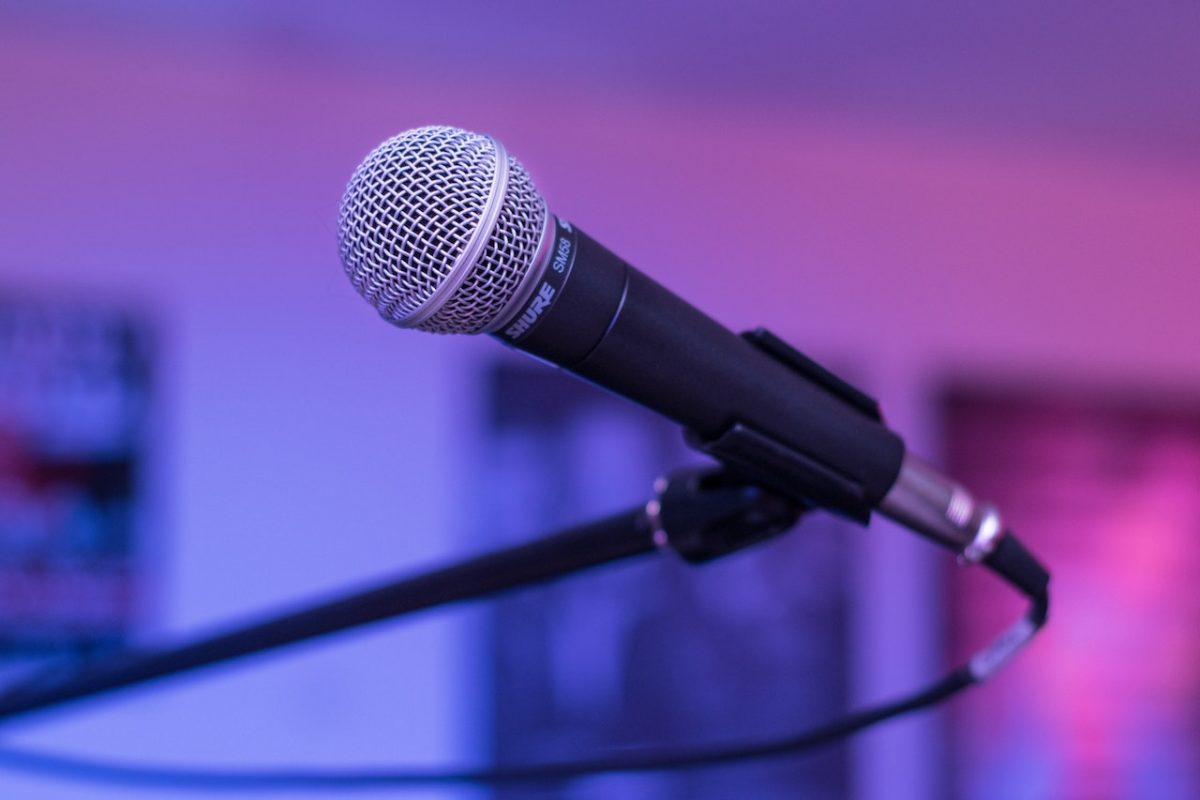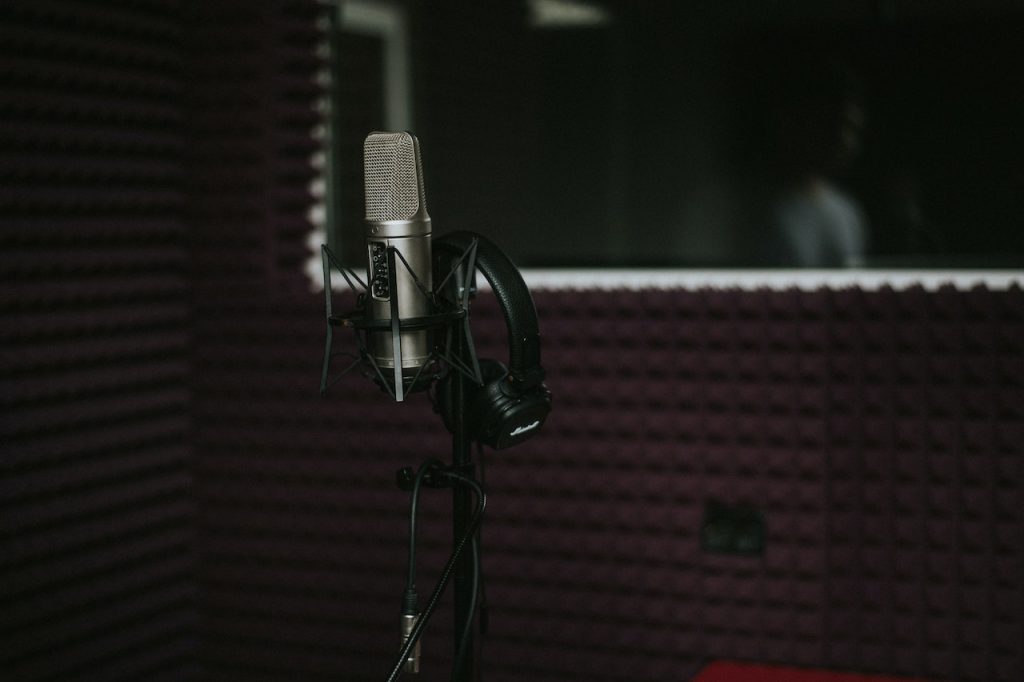Microphones are arguably the most important part of a home studio. After all, you need something to record sound, don’t you?
This post will cover everything you need to know about microphones. We’ll discuss how microphones work so whether you’re a beginner or an experienced audio professional, this post is for you!
What is a microphone? Microphones are transducers that convert sound pressure into an electrical signal. Microphones are used in the music industry for recording audio.
What is a microphone?
A microphone is a device that transforms sound waves into an electrical signal. A microphone’s capsule has a little diaphragm on a moving coil within. Sound waves cause the diaphragm to vibrate. This results in the coil oscillating in the magnet’s field, creating an electric current.

But it’s not quite that simple. There’s much more to microphones, including diaphragm size, condenser vs. dynamic mics, and polarity.
AKAI Professional MPK Mini MK3

AKAI Professional MPK Mini MK3
What is a diaphragm?
To fully understand microphones, it is necessary first to understand the diaphragm, which is a crucial component of any microphone. Diaphragms function like miniature speakers and are made of a thin sheet (often plastic), a magnet, and a coil (the electrical conductor). The diaphragm vibrates in response to acoustic energy, producing a voltage.
Condenser microphones vs. dynamic microphones
Not all microphones are the same. Let’s take a look at the difference between condenser and dynamic microphones.
Condenser microphones
Condenser microphones are best for capturing vocals and high frequencies. Condenser mics, often referred to as “capacitor mics,” are typically used in recording studios because of their high fidelity and precision.
A condenser microphone is like a capacitor with some extra features. A capacitor is a passive electrical part that stores energy in an electric field for a short amount of time. Two parallel plates are used to create a capacitance in a capacitor. As the distance between the two objects gets smaller, the capacity to hold an electric charge, or capacitance, increases.
When sound waves hit the diaphragm, they vibrate,
and the distance between the plates changes.
A condenser microphone’s diaphragm is hung on a solid plate and weighs very little. The diaphragm shifts in response to the pressure of sound waves. When sound waves hit the diaphragm, they vibrate, and the distance between the plates changes. The resultant change in capacitance represents the acoustic energy from the input source.
Dynamic microphones
The dynamic microphone is the industry standard. They’re low-priced, long-lasting, and sound great. Dynamic microphones make a sound in the opposite direction of a normal speaker by suspending a moving induction coil in the field of a magnet.
Professional recording studios often use dynamic microphones because they are sensitive to sudden changes in sound and can handle loud volumes. This makes them an excellent option for close-miking very loud sources like a drum set or bass guitars.
Studio engineers often put an in-line preamp between a dynamic microphone and the console or microphone preamplifier. With the help of an in-line preamp, you can boost the signal and get the most out of a dynamic microphone, which is often a low-output instrument.
What are microphone polar patterns?
The polar pattern of a microphone shows where it picks up sound best and where it doesn’t pick up sound as well. There are generally six different types of microphone polar patterns:
- Directional: Mics that are directional or unidirectional are adept at picking up sounds coming from a certain direction, making them a good choice for recording in noisy environments.
- Bidirectional: Bidirectional microphones, sometimes called “Figure 8 microphones,” capture sound from the east and west while rejecting noise from the north and south. They are especially good for recording phone conversations because they can pick up sound from more than one direction.
- Omnidirectional: Sound from any direction may be picked up using an omnidirectional microphone. Omnidirectional microphones can pick up all the sounds in a given area, but they don’t do a good job of focusing on a single subject when there is a lot of background noise.
- Cardioid: The cardioid pattern is about the shape of a heart, which is how it got its name. It is most sensitive to sounds coming from straight ahead and to the sides, while it ignores sounds coming from 180 degrees in the opposite direction. Mics with a cardioid, super cardioid, or hyper-cardioid pattern filter out everything but the singer’s voice, keeping the signal clear and stopping feedback.
- Supercardioid: The super-cardioid mic has a wider acceptance angle, taking in sound from about 180 degrees, but it also rejects more sound from the sides.
- Hyper-cardioid: At 180 degrees, the hyper-cardioid can pick up an even wider range of frequencies. However, it can’t pick up frequencies at 90 and 270 degrees. For example, if you’re making music in a loud room or studio, you’ll want to pay attention to polar patterns.

What are the different types of microphones?
Let’s take a look at some different types of microphones.
- Lavalier: A lavalier microphone, also called a “lavalier,” is a small headset microphone that actors and public speakers wear to freely use their hands while using the microphone. They are typically small and unassuming. Small clips are typically included to facilitate attachment to collars, ties, and other clothing.
- Shotgun Microphones: Shotgun microphones are long mics and are often used in film and TV production to pick up sounds from a distance.
- Laser microphones: Laser microphones use the vibration of surfaces affected by sound waves to pick up sound. This is because vibrations cause the angular speed of the reflected lasers to change, which is then taken as sound. Laser microphones are useful when capturing audio from a great distance.
- Ribbon microphones: Ribbon microphones consist of a magnetic field and a narrow strip of conductive metal. Typically, the ribbon is fabricated from a material like aluminum, duralumin, or nanofilm. When sound waves hit a microphone, they cause the ribbon to move, turning it into an electrical signal.
If you want even more tips and insights, watch this video called “A Quick Guide to Microphones” from the Soundfly YouTube channel.
Frequently asked questions (FAQ)
Do you still have questions? Below are some of the most commonly asked questions about microphones.
Do microphones need a power source?
No battery or other power source is needed for a passive microphone. They are not equipped with any internal amplification (though passive step-up output transformers can boost the output voltage of a passive microphone).
Which mic is best for vocals?
Many artists and sound engineers like to use a cardioid condenser microphone with a big diaphragm when recording vocals in a studio. This mic calls for a flat polar pattern, a boost in the presence range, and a natural frequency response.
What is the best type of microphone?
It depends. However, condenser microphones are the most popular option when picking up subtleties in a speaker’s speech since they reproduce high frequencies the best. Transients, or the highest points in a sound wave, are reproduced more accurately due to their high-end responsiveness.
Conclusion
There is more to a microphone than what may be found in its technical specs. Structure, metal type, and manufacturing accuracy may significantly impact a product’s effectiveness. For this reason, it’s reasonable to call pricing a key criterion. It’s important to remember that the only way to discern the differences between an excellent microphone and a poor one is to listen.
We hope you now know everything you need about microphones so that you can confidently choose your new microphone.
This article covered what a microphone is, the different types of microphones, and how the microphone works. Here are some key takeaways:
Key takeaways
- A microphone is a device that transforms sound waves into an electrical signal.
- Condenser microphones are best for capturing vocals and high frequencies.
- In a dynamic microphone, the audio signal is generated by the motion of a conductor within a magnetic field.
- The polar pattern of a microphone shows where it picks up sound best and where it doesn’t pick up sound as well.
- The loudspeaker, located at the other end of the audio system, is also a transducer, converting electrical energy back into audible sound.
So, what microphone do you prefer to use? And did I cover everything you wanted to know? Let me know in the comments section below (I read and reply to every comment). If you found this article helpful, share it with a friend and check out my full blog for more tips and tricks on music production. Thanks for reading, and never stop making music.















